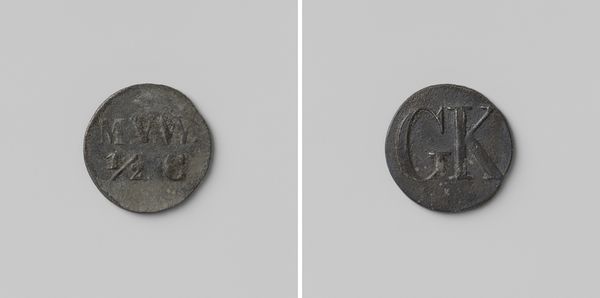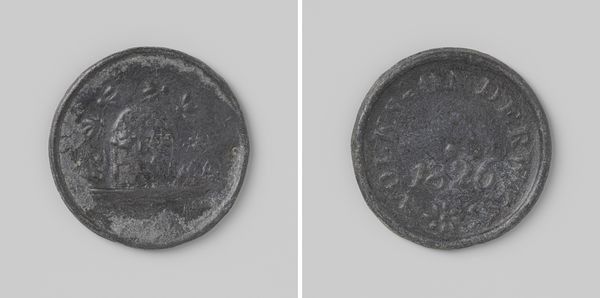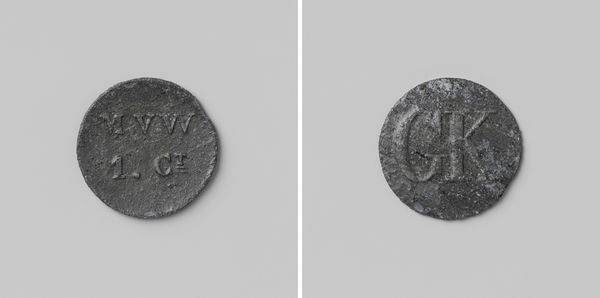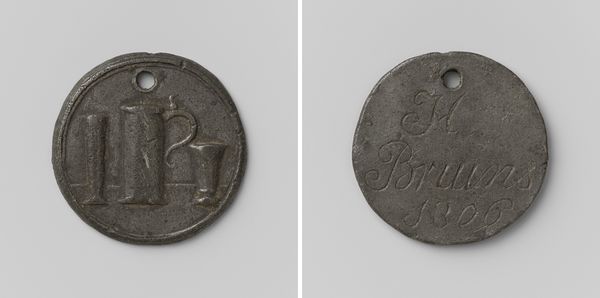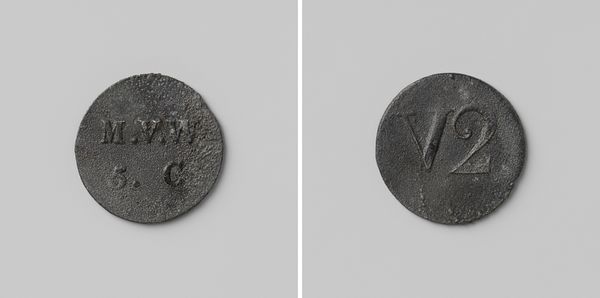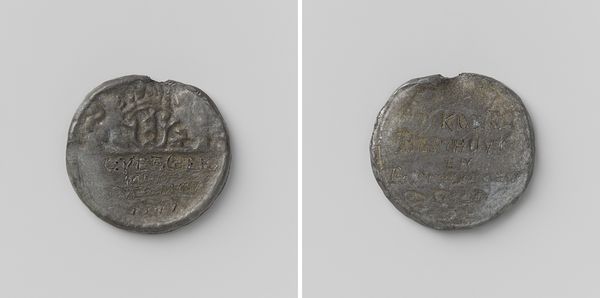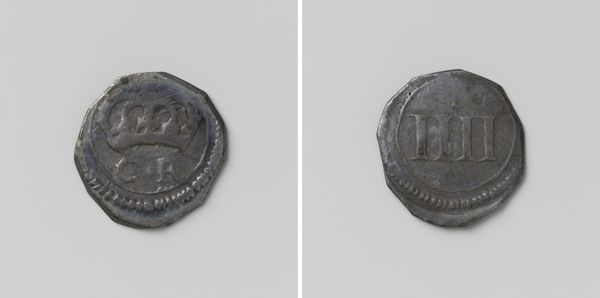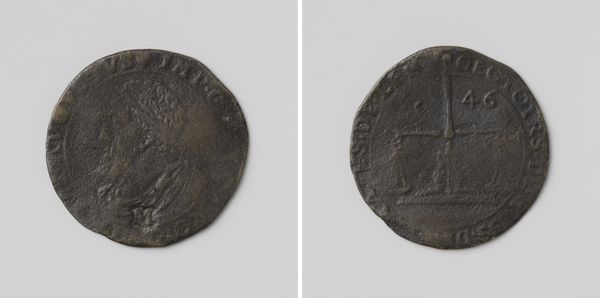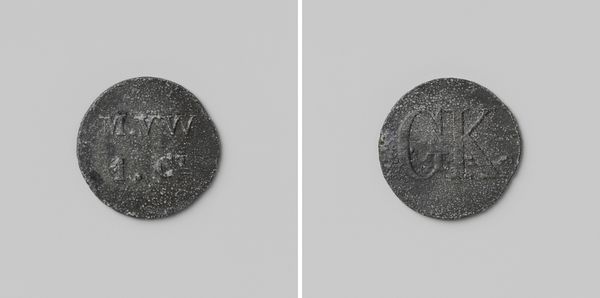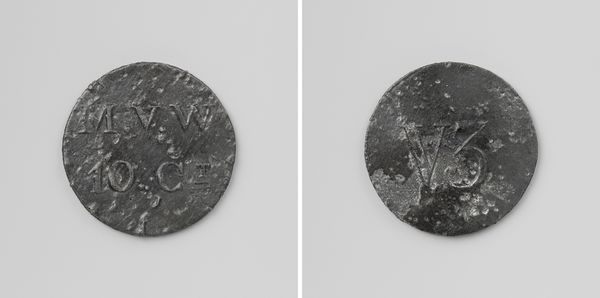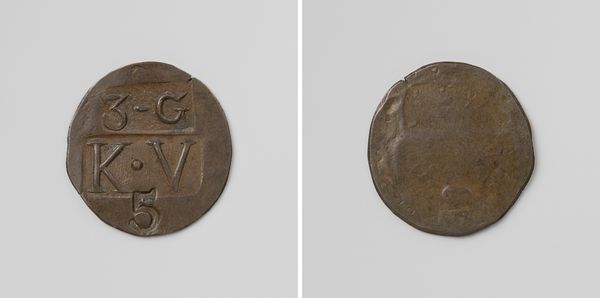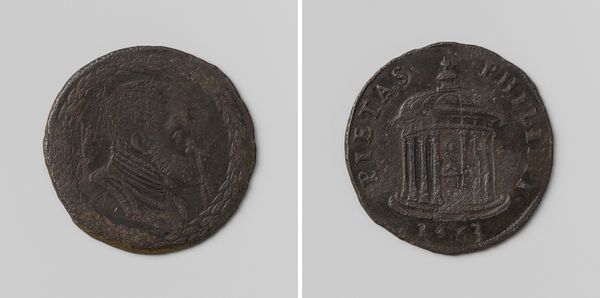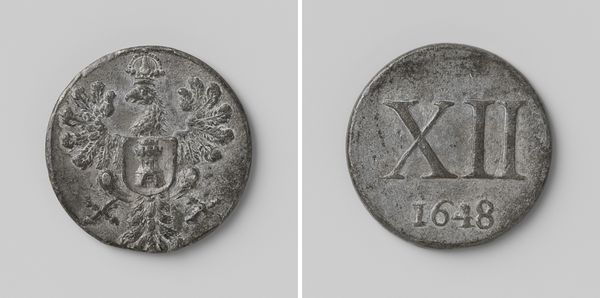
carving, metal, engraving
#
carving
#
dutch-golden-age
#
metal
#
history-painting
#
coin
#
engraving
Dimensions: diameter 2.4 cm, weight 5.17 gr
Copyright: Rijks Museum: Open Domain
Curator: Here we have a “Twaalf stuiver,” or twelve-stuiver coin, a betaalpenning– a type of payment token – from the Vroedschap of Middelburg, dating from 1648. Crafted from metal with exquisite carving and engraving, it's a small window into the economic realities of the Dutch Golden Age. Editor: It’s so tiny! At first glance, almost severe, a world shrunk down and stamped on a coin. It feels almost weighty with the history etched into its surface. Curator: Absolutely. Middelburg was a prominent city in the Dutch Republic, especially within the province of Zeeland. The Vroedschap was effectively the city council, and issuing their own coinage underscored a level of local autonomy, reflecting a complex relationship with the larger Republic. Editor: I love how this little circle held such symbolic weight. It's like they are saying, "We’re here. We matter." Look at that stylized heraldry. The eagle feels almost frantic. What’s that on the other side? Curator: You've got an 'XII' denoting the twelve stuivers and then the year, 1648. Which, historically, is quite a loaded year. It coincides with the Peace of Münster, ending the Eighty Years' War and formally recognizing Dutch independence from Spain. Editor: So, this isn't just a coin; it’s a tiny monument to freedom and self-governance. It’s kind of romantic to imagine this little metal disc jingling in someone's pocket at such a pivotal moment. Did many cities do this, issue their own coinage? Curator: While not every city held the right, several did, especially those with significant trading power. It signified economic might and administrative independence. Coins like these functioned both as currency and as assertions of local identity within a larger, sometimes turbulent, political landscape. Editor: I see it now, not just as metal, but as a quiet, pocket-sized rebellion. That’s beautiful, actually. Looking at it this way gives the object a kind of defiance you wouldn't necessarily get from a painting hanging on a wall. It almost seems like you could touch the actual 17th Century. Curator: Precisely. These tangible artifacts allow us to touch base, quite literally, with a society navigating massive political and economic shifts. And consider the artist, Johannes Looff. He wasn’t just an engraver; he was a shaper of civic identity. Editor: Thinking about Looff holding this tiny bit of metal and engraving it, he must have thought deeply about history in some ways, right? Curator: Undoubtably! Every line would have resonated with the weight of recent events, not merely as a design choice but as a declaration. I think we owe him a nod for that. Editor: A coin then, and an invitation now. Middelburg, the Netherlands, and the artist's legacy – it makes you want to research so many other overlooked narratives, one small stuiver at a time.
Comments
No comments
Be the first to comment and join the conversation on the ultimate creative platform.
